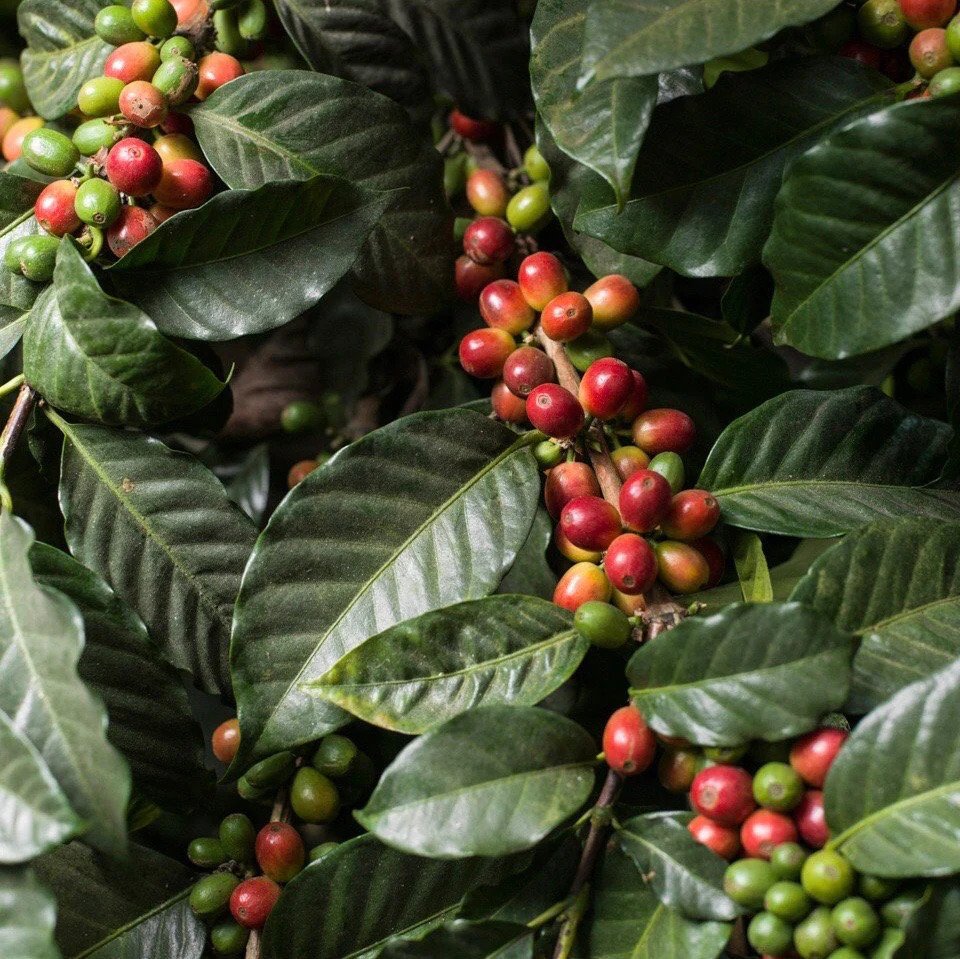
This is Part 3 in a series of educational posts, designed for the consumer and/or folx building a foundation in coffee. I wrote these for work, but you get the uncensored versions here lol. Hope you enjoy!
(Links to all posts in the series at the end)
From the outside, the distinction between specialty & “regular” coffee seems nebulous.
Presumably it comes down to taste: “regular” coffee is bitter, and is roasted dark to disguise defects. Specialty coffee is has more sweetness, more acidity, a cleaner flavor profile. But why? Where do those flavor differences in taste come from? They are the result of real, tangible differences in how coffee is grown and handled. These differences mean a coffee will sell either as specialty (top quality) or commercial / commodity (everything else). Picking is a primary example of one of these differences.

I grew up in the country, surrounded by woods and wild berry bushes. Every summer day, I scoured dirt roads for ripe blackberries. On each thorny vine were fruits in all stages of maturity— hard and green, blushing red, dark but not yet soft. The ripest berries were matte black and swollen, giving with only a gentle tug. At the end of the season, ripening accelerated, then the fruit rotted and fell to the ground.

Coffee harvest works the same way, but scaled, monetized, and incredibly demanding.
Specialty coffee is picked by hand, and pickers quickly judge the ripest cherries by sight. Why does ripeness matter? If you’ve tasted an unripe blackberry, you’ll have an idea. It’s just not great. Coffee is the same way – taste is dramatically impacted by ripeness. When an immature coffee seed makes it through picking, processing and sorting, and finally into the drum of a coffee roaster – it’s called a quaker. Quakers roast pale brown, and taste like peanuts.
Overripeness, on the other hand, can cause another host of issues – from a vinegary taste to mold and rot. So you can see why perfectly ripe cherries are desirable for specialty coffee: they yield seeds at the peak of sweetness and development.

A sorting step after picking, which removes more unripe and overripe berries, improves the uniformity of the lot. But careful, uniform picking is in important start – so much so that it’s become an aesthetic signifier of quality for coffee companies. Coffee fans drool over Instagram posts of perfectly ripe, red harvests.
Many roasters even doctor their farm photos, making harvests look more evenly red. And that in itself reveals that uniform picking isn’t simple to achieve.
Coffee, like blackberries and many other fruits, doesn’t all ripen at once. It can take more time for a coffee picker to select only the ripe cherries from a shrub. However, pickers are often paid for the amount of coffee they pick, and not for the quality of picking. In these instances, pickers have little incentive to select only ripe cherries – it can slow them down and make them less money. Since coffee picking is often low-paid work – to the point that low wages are causing labor shortages – every little bit counts.
Specialty farmers can solve for this by paying their pickers a premium for quality, not quantity. However, this isn’t always a straightforward choice, since it can increase labor costs. When labor makes up around half of production cost, that’s a tough call. And keep in mind that many farmers face selling their crops at a loss, due to unpredictable factors such as market fluctuations, or lower coffee scores as a result of leaf rust or bad weather.
Although the specialty party line equates good picking with superior passion or dedication on the part of the farmer, that’s an oversimplification.
Many farmers section their farms into specialty and commercial. The specialty coffee is picked for quality, whereas the commercial section is picked with an anything-goes approach. Different standards are also applied to processing and drying.
Toward the end of the harvest, the shrubs must be stripped of all cherries — ripe, overripe, whatever— or the fruit will fall and draw insects. Even if this happens in the specialty section, the resulting pickings are sold as commercial.

Selling commodity coffee isn’t a failure of passion or skill – it’s practical. Although specialty coffee fetches a higher price, it is also more costly and complex to produce. Selling can also be more complicated – specialty coffee exporters and buyers offer different prices for the same lot of coffee, or they’ll pass on a lot altogether.
However, a farmer can always sell coffee to the commodity market, although it will be for a lower price per pound. So, selling some coffee as commercial creates reliable cash flow to supplement a farmer’s revenue from specialty, and allows them to make efficient use of their whole harvest.
Picking is just one of many factors that separate specialty and commodity. As you can see, the factors at play inhabit many overlapping realms. So when someone asks what makes specialty coffee special, it’s hard to know what to say. “It’s picked by hand” is an oversimplification that kind of fetishizes low-wage labor, but it is one concrete difference that is easily understood by the consumer.
So if you think of a good sound byte that explains picking – let me know! And I hope this has been helpful in illuminating one of the many factors that make specialty coffee special.
If you’re interested in learning more, check out the other posts in this series:
Part 4: OK BUT HOW DO YOU GET THE SEEDS OUT?
Questions? DM me! I’m on Instagram: @umeshiso_

